There’s a reason wood and wire fences show up on gardens or homesteads of every size. They work. Plain and simple.
They’re tough enough to keep deer out of the garden, chickens in their pen, and nosy dogs from digging up your potato beds.
You can build one in a weekend if you plan it right or stretch it across a full pasture if you’ve got livestock to think about. You don’t even need a contractor or a massive budget to get one that lasts.
The mix of materials hits that sweet spot: wood for structure, wire for visibility and strength. Together, they make fences that feel like part of the land instead of something slapped on top of it.
These are fences folks are actually building – rural families, gardeners, backyard growers. Some are simple and scrappy. Others are polished, with arbors and tiered layouts. But all of them are grounded in real use.
So if you're figuring out how to protect your space, corral your critters, or just clean up your garden layout, one of these ten ideas might just be the right fit.
1. Simple Chicken Wire Fence with Bamboo Supports
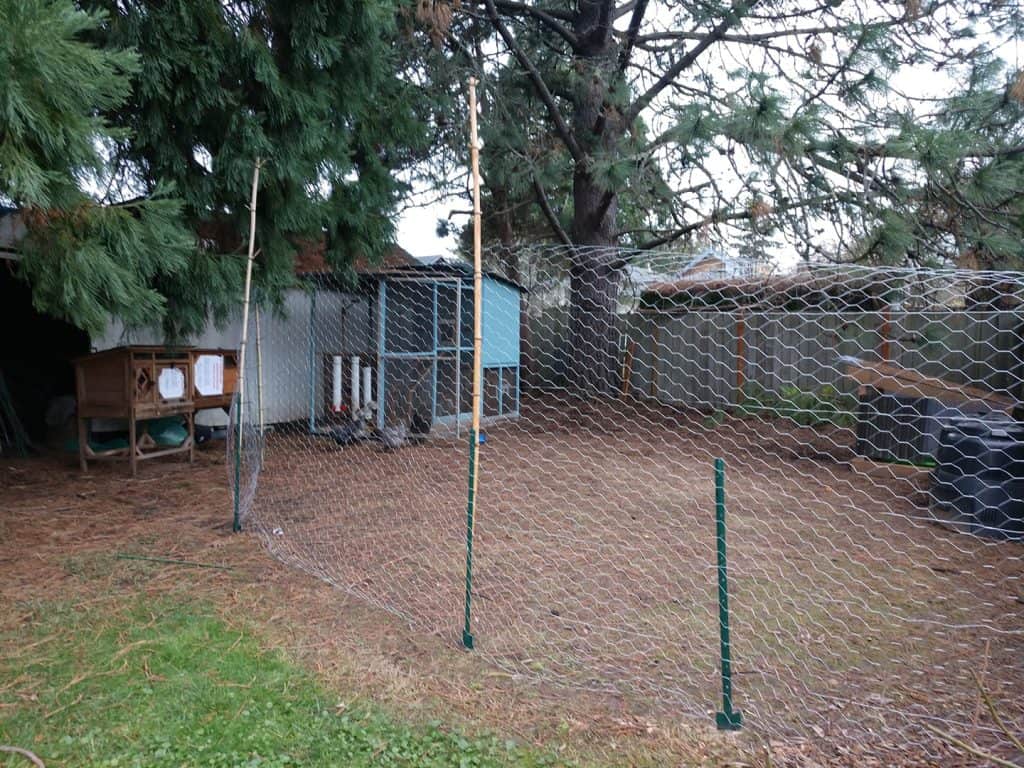
It doesn’t get more basic – or more practical – than this. A few bamboo poles, some cheap chicken wire, and you've got yourself a quick barrier that’ll keep small critters out (or in).
It’s the kind of fence you can throw together in an afternoon with scrap materials and a roll of wire from the local farm store.
This works best for light-duty needs: chickens, small dogs, curious rabbits. Don’t expect it to stand up to a determined goat or a nosy raccoon.
The bamboo adds a nice natural touch, though. And if you space the supports close enough and anchor the wire with ground staples or rocks? It’ll surprise you.
It’s especially handy for temporary setups. Need a movable pen for a chicken tractor or a pop-up garden enclosure? This is the one. Simple, cheap, fast – and when it’s done right, it doesn’t look half bad.
2. Classic Wood and Wire Garden Fence with Gate
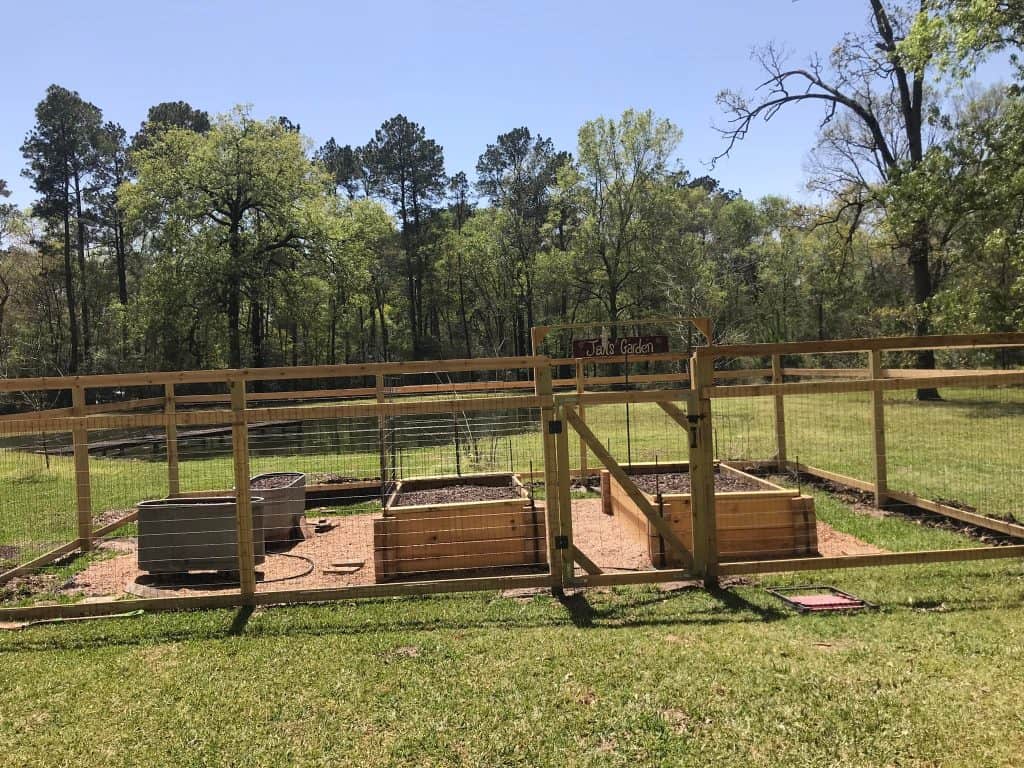
This is the one you see in the glossy garden books but people actually build it.
It’s got structure, style, and just enough polish to make your backyard garden feel like a proper setup. The frame is usually made of pressure-treated wood. The fencing? Welded wire, typically 2×4 mesh.
It’s the gate that really seals the deal. Wide enough for a wheelbarrow, sturdy enough to keep out dogs or deer, and simple to latch. Not to mention, it makes getting in and out for watering, harvesting, or weeding way less of a hassle.
This style is ideal for raised bed gardens. It keeps the chickens from scratching up your mulch and the local wildlife from munching your lettuce.
Bonus: it gives your garden a “finished” look, without being overly fancy. Neat, tidy, and absolutely functional.
3. Heavy-Duty Wood and Wire Fence for Serious Gardens
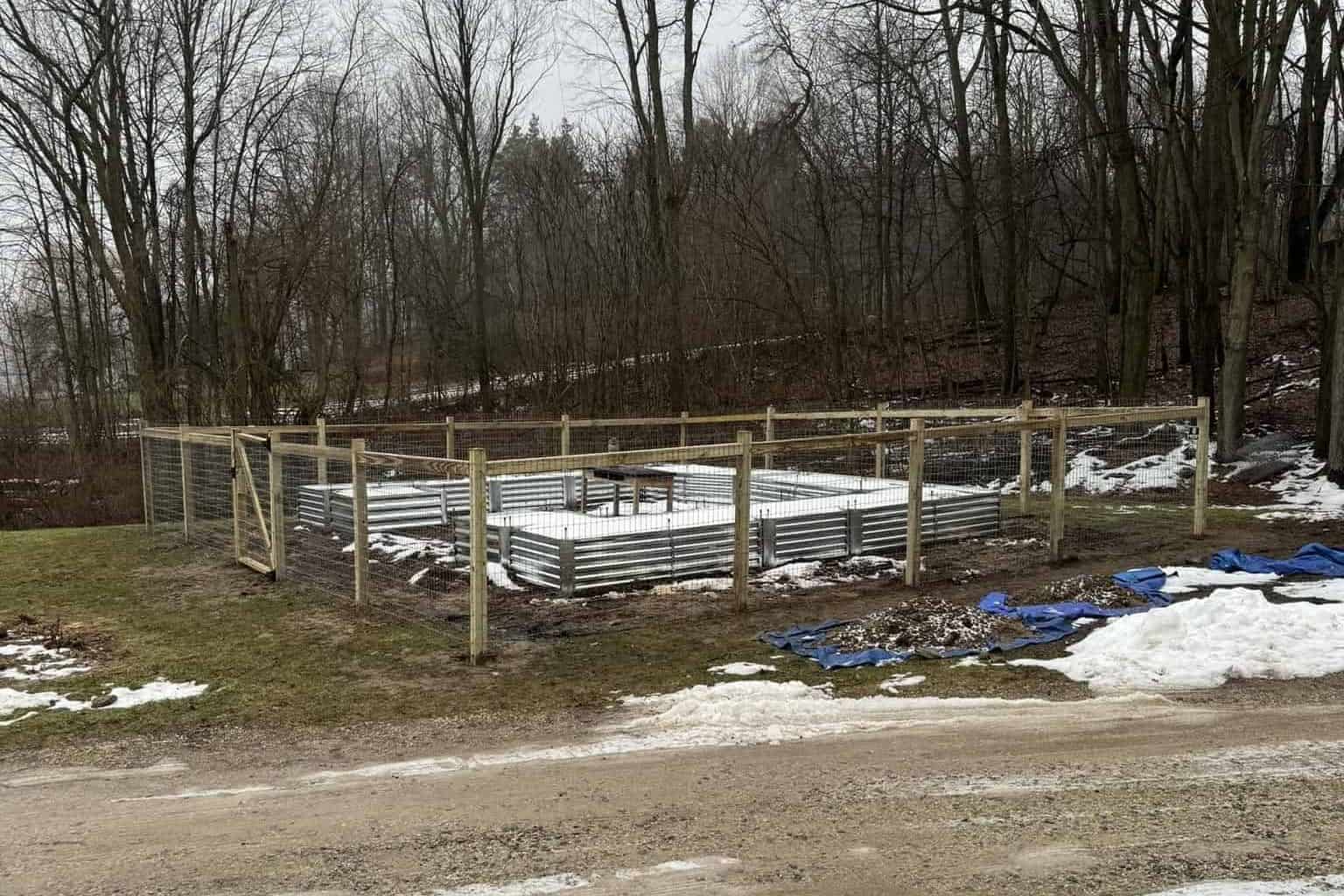
This one's built like a tank – for folks who mean business in the garden. Think tall posts, strong corners, deep-set anchors. The wire is still welded, but it’s usually thicker gauge.
This fence is all about protection, especially from deer, raccoons, or anything else with four legs and a hunger for tomatoes.
It's the go-to for people with big metal raised beds or lots of high-value crops. Gardeners in colder regions also like this setup because it holds up well under snow load and shifting soil. And if you’ve got dogs that treat the garden like a racetrack? This’ll stop them cold.
If you’re building tall (say, 6 feet or more), bracing the corners is key. Same with using solid hardware for your gate. But once it’s up? You’ve got a fence that won’t flinch for years.
4. Elevated Wood and Wire Fence with Concrete Footing
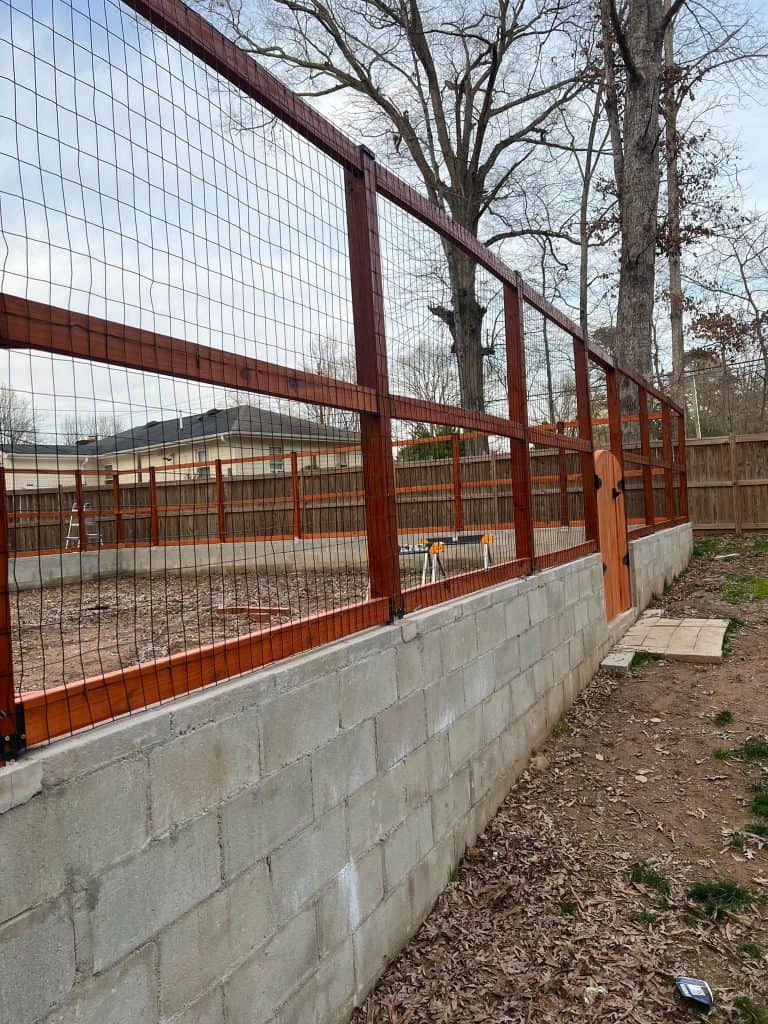
This is the kind of fence you put in when you don’t want to build another one five years from now.
It’s serious. Set your posts deep, pour in concrete, and you’ve got a rock-solid foundation that’ll shrug off wind, shifting soil, or a wayward wheelbarrow crash.
The elevation part? That’s for areas where the ground gets soggy, or where critters like gophers and groundhogs like to dig. Raising the base just a few inches (or more, depending on your layout) keeps the wood from sitting in water and adds another layer of pest defense.
This setup isn’t flashy but it’s the quiet workhorse of the bunch.
Especially good for uneven terrain or areas that freeze and thaw hard. Not everyone needs concrete footings, but if you do, you’ll be glad you went the extra mile.
5. Tiered Wood & Wire Enclosure for Raised Bed Gardens
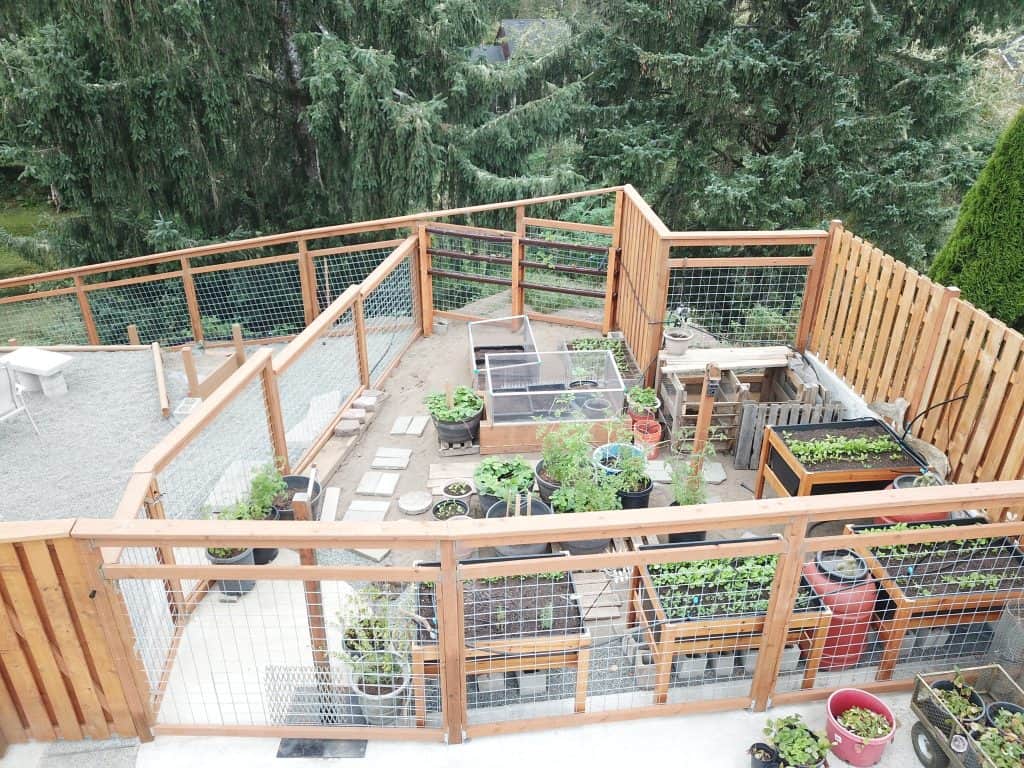
If you’ve got hills, this is your fence. But even on flat land, this layout has its perks. Instead of a single flat fence perimeter, you get multiple levels – think layers of growing zones, storage tucked into corners, maybe a cold frame or two under one edge.
This kind of design is all about getting the most out of limited space. It’s a bit more complex to build – more cuts, more measuring – but the payoff is big. Your garden stays organized.
Your walkways are clear. You can tuck in a compost bin or a rain barrel without it being in the way.
It’s especially useful for folks doing year-round gardening. You can section off spots for seedlings, fall crops, or even tools. It’s not a beginner build, but for someone ready to level up their garden game? This one hits.
6. Wire Mesh Fence with Pergola Gate
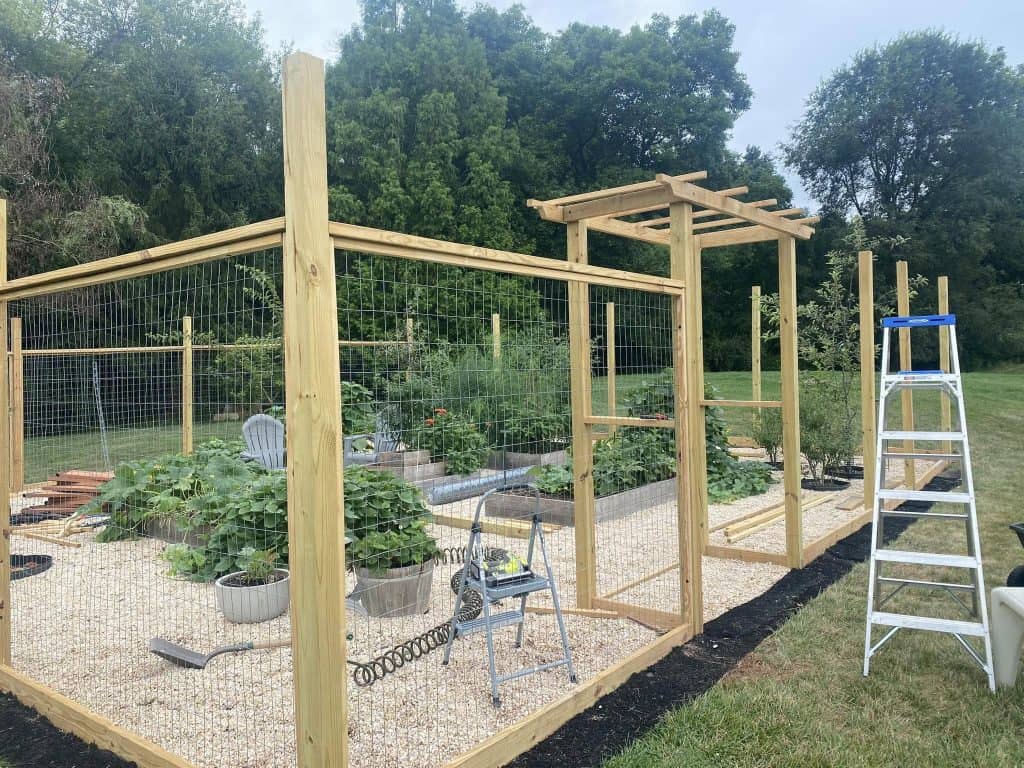
This one’s a head-turner. The fence itself is a standard wood frame with welded wire mesh. But the gate is where it shines: a wooden arbor overhead, sometimes with vines growing up the sides or a lantern hanging down the center.
Is it necessary? Nope. Does it make the whole space feel like a little oasis in the yard? Absolutely.
This works especially well if your garden is part of your backyard living space. It draws the eye in and sets a boundary without being too harsh. Structurally, it’s just as solid as any other fence here – just dressed up a bit.
If you're someone who cares about both form and function, this is your match.
7. Classic Split-Rail Wood & Wire Garden Fence

This one has that old-farm charm going for it. Picture horizontal wooden rails, that weather to a soft gray over time, paired with hidden welded wire mesh tucked behind them.
It’s the kind of fence that looks like it’s been there forever even if you just put it in last month.
It’s not just for looks, though. The wire mesh does the heavy lifting when it comes to keeping out animals. The rails? They frame it all in and give the structure its visual punch. It’s a great balance – rustic and real.
The double cross-braced gate is a nice touch too. Not only does it stay solid and wide (great for wheelbarrows or even small machinery), but it adds this stable, symmetrical look that feels right in a wide garden plot. If you’ve got space, this one really opens it up.
8. Rustic Post & Wire Garden Fence with Raised Beds
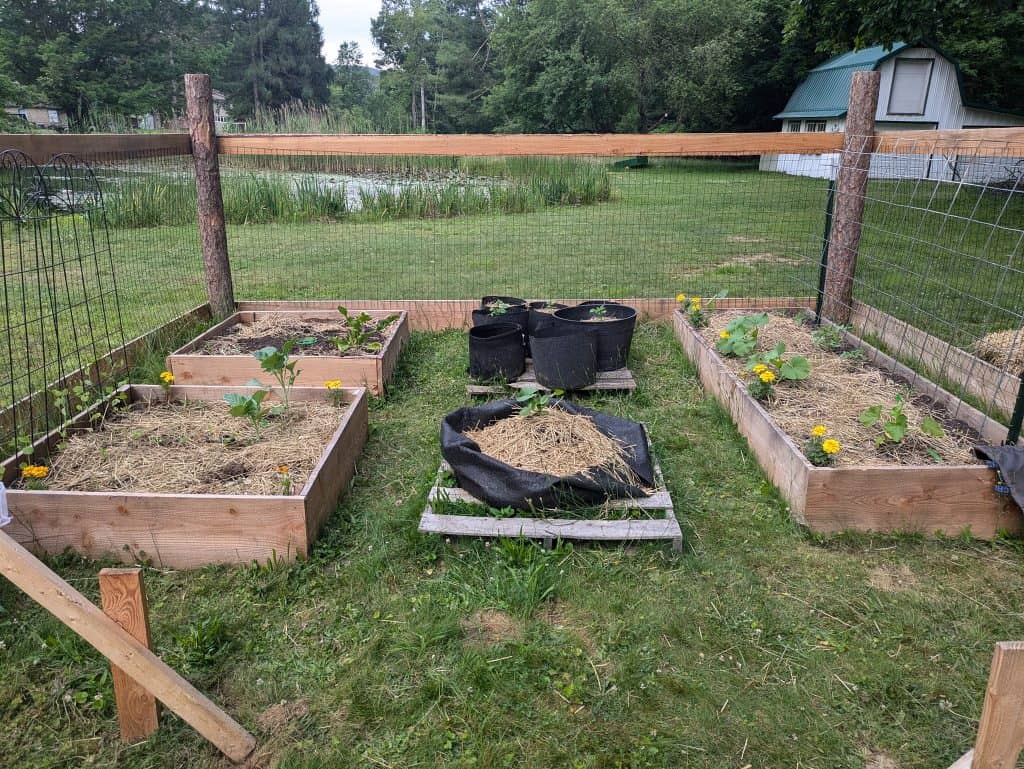
Rough-cut posts. Simple wire mesh. A little uneven in places. But it works – really well, actually.
This design is pure function. Round natural posts (sometimes cedar, sometimes just whatever’s on hand), sunk deep enough to stay upright and wrapped with welded wire.
Around the inside? Raised beds and grow bags, often just arranged to fit the space without overthinking it.
It’s the kind of fence you throw up because the plants need protection now – not six weeks from now when the perfect materials arrive. And yet somehow, it ends up looking perfectly at home on a working homestead.
If you like things straightforward, sturdy, and low-cost, this one’s for you. Just make sure those posts are anchored well – or use rocks and wire tension to help if digging’s a pain.
9. Beginner-Friendly Field Fence Layout

This is where a lot of people start when they’ve got a bigger patch of land and no fence at all. It’s usually under construction for a while – posts going in one weekend, wire added the next – but that’s okay. It grows with you.
The layout is open and adaptable. Posts are spaced evenly, often farther apart than in garden fencing, which saves time and money. There’s usually a wide entry point (think ATV or truck access), and the wire mesh can be added in stages.
This design is about learning as you go. Figuring out post depth, tension tricks, maybe even trying out T-posts in a few spots.
It’s the fence that teaches you how to build fences – while still protecting your space in the meantime.
10. Ranch-Style Wood & Wire Perimeter Fence
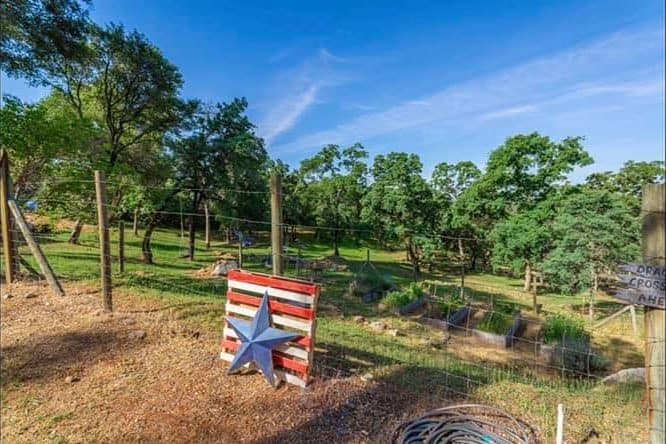
This is big land fencing. Wide-open views. Tall posts. Long stretches of wire. It’s not about detail work – it’s about covering distance and doing it in a way that holds up to animals, wind, and time.
The wire here is usually tensioned steel or heavy-gauge welded mesh. Posts are often spaced out more than in a garden fence, but set deeper to handle the pull.
If you’ve got goats or larger livestock, this layout makes a lot of sense – it marks the boundary without boxing things in visually.
There’s also room for personality. Some folks hang metal stars or signs on the gates. Others run solar lights along the top rail. It’s minimal and efficient, but doesn’t have to be plain.
This is the kind of fence that becomes part of the landscape over time – blending in while still doing the work.
Choosing the Fence That Fits Your Land
There’s no one-size-fits-all solution here. The right fence for your homestead depends on the land, the animals, the plants – and you.
Some folks need quick and cheap. Others are ready for a more permanent setup. A few want something beautiful that also holds up to digging dogs and sneaky deer.
What all these fences have in common is they work. They’ve been built, tested, patched up, and improved by real people solving real problems.
Whether you're just fencing a tiny garden bed or running wire along a 3-acre perimeter, there's something here that'll meet you where you're at.
Start with what you need. Add what you want. And build the kind of fence you won't have to think about every week unless you're admiring how well it turned out.
Frequently Asked Questions (FAQs)
Got questions? Here are quick answers to common wood and wire fence questions.
1. Can I build a wood and wire fence by myself or do I need help?
You can do most of these solo, especially the smaller builds. But for tall posts, long stretches of wire, or concrete footings? An extra pair of hands makes life way easier.
2. What type of wire mesh is best for keeping out deer?
Welded wire with a height of 6 to 8 feet is usually enough. Deer can jump – but they’re less likely to try if the fence is tall and solid.
3. How long do these fences usually last?
It depends on the materials and weather. Pressure-treated wood and good wire? Easily 10–20 years if built right. Add concrete footings, and it goes even longer.
4. Are there cheaper alternatives to pressure-treated lumber?
Sure – look into untreated cedar (naturally rot-resistant), repurposed pallets, or even rough-cut logs if you’ve got access to your own timber.
5. What’s the easiest design to start with if I’ve never built a fence before?
The bamboo and chicken wire setup is as simple as it gets. For something sturdier, the beginner field fence layout gives you room to experiment without too much risk.
Ready To Transform Your Garden?
Are you looking for the best way to layout your garden beds? Maybe you're feeling a bit stuck on how to make the most of your space?
We’ve got you covered! Check out our 101+ Garden Bed Layout Ideas for your next raised bed project. This guide is filled with creative and practical ideas that can help you design a garden that fits your style, whether you’re just starting out or have been gardening for years.
Get your copy today and get inspired to bring your gardening dreams to life.

